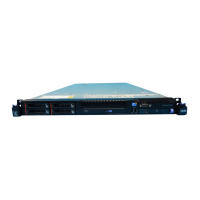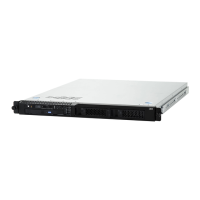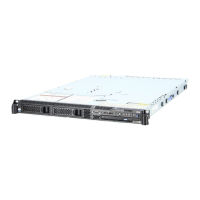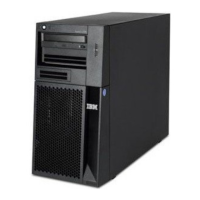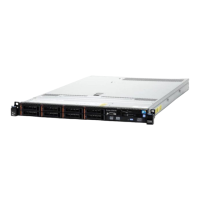↓ The last FRU you exchanged is not the failing FRU. Go to step 12 of
this procedure to continue FRU isolation.
17. Is the SRC B100 4504 or B100 4505 and have you exchanged disk unit 1 in the
system unit, or are all the reference codes on the console 0000?
Yes No
↓ Use the new SRC or reference code to correct the problem (see
“Chapter 2. Unit Reference Codes” on page 59).
This ends the procedure.
18. The last FRU you exchanged was failing.
Note: Before exchanging a disk unit, you should attempt to save customer
data. Go to “Disk Unit” under “Chapter 4. Removal and Installation
Procedures” on page 617 before exchanging a disk unit.
This ends the procedure.
SDIOP-PIP13
Introduction: This procedure isolates problems on the interface between the I/O
card and the storage devices when the I/O card is the most probable failing item.
Note: Determine if the system has logical partitions. Go to “Determining if the
System Has Logical Partitions” on page 943, before continuing with this
procedure.
Note: If the system has logical partitions, perform this procedure from the logical
partition that reported the problem.
Note: The unit reference code (part of the SRC that sent you to this procedure)
indicates the SCSI bus that has the problem:
URC SCSI Bus
3100 0
3101 1
3102 2
1. Were you performing an IPL from removable media (IPL type D) when the
error occurred?
No Yes
↓ Exchange the FRUs in the failing item list for the reference code that
sent you to this procedure.
2. Perform an IPL to DST (see “Dedicated Service Tools (DST)” in the iSeries
Service Functions information).
Does an SRC appear on the control panel?
No Yes
↓ Go to step 7 of this procedure.
3. Does one of the following displays appear on the console?
v Disk Configuration Error Report
v Disk Configuration Warning Report
v Display Unknown Mirrored Load-Source Status
SDIOP PIPs
404
iSeries Model 830, 840, SB2, and SB3 Problem Analysis, Repair and Parts V5R1
